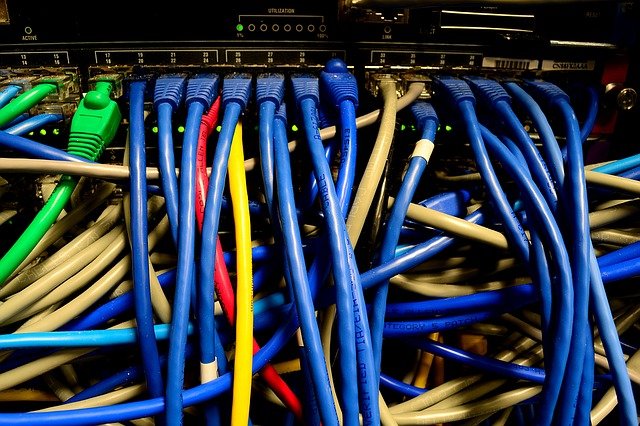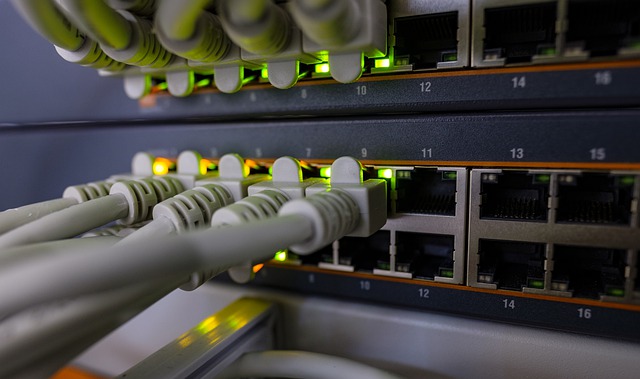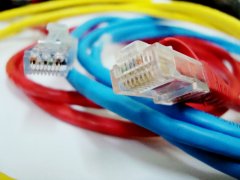In schools your IT costs are one of the biggest and the pandemic has highlighted the need for investment. But should this investment be a capital, outright purchase or are leasing options better?

I was always told that the three biggest costs for a school are staff, buildings/estates, and your IT/technology costs. The last year and a half, and the pandemic have shown us that some schools weren’t ready in terms of technology, in terms of their infrastructure and the client end devices or at least there was a need for improvement. I have already posted on several occasions that there is a clear need for investment. The issue though is should this investment be in the form of outright capital-based purchasing or leasing revenue-based purchasing?
Capital
I used to believe, for big spends such as device replacement or significant infrastructure upgrades, the only way was capital. If you own the equipment you might be able to squeeze extra years out of the kit plus a capital purchase has no leasing charges associated. Capital purchasing was simply cheaper in the longer term, but painful in the short term due to the upfront costs.
I came to learn though that its not quite that simple. All too often I have seen capital purchases for devices or infrastructure approved but without thinking longer term about future replacement costs. In other words, the immediate cost was approved but without planning a replacement cycle, leading to difficult questions in the future. Additionally, capital purchases lend themselves to scope creep. So, the school has replaced 25 PCs; Someone will ask to keep 5, of the old machines being replaced, at the back of the maths class or 5 for English and suddenly you now have 35 PCs. That’s 10 additional PCs which will require software and licensing costs, which will require support, and which will require eventual replacement. The quiet years, maybe 3 or 4 years after you have replaced most of your PC fleet, are also an opportunity for spending on other projects, etc, without considered the high capital replacement cost which will recur when the fleet once again needs replacement. This can then lead to overspend. Now this can be avoided if you are disciplined in your capital purchasing and in your approval processes, but this requires care and discipline.
Leasing
Leasing shifts the costs to a revenue model and a “cost of doing business”. The costs associated with your technology are therefore much more visible as these costs are spread equally across the leasing cycle. It is therefore easier to avoid scope creep or overspending, as the technology costs are clear to see. Sadly though, like everything, leasing does have its downsides. These are the leasing costs, which I note continue to decline, and also the fixed nature of the cycle. This means the option of squeezing an extra couple of years out of your devices, etc, isnt available as once the lease finishes you need to enter a new lease. I am becoming less and less concerned by this. Technology usage is on the increase, which increases wear are tear, plus cyber security is requiring more frequent updates leading to quicker device obsolesce. As such I feel the days of managing to squeeze a couple of extra years out of things are quickly disappearing meaning fixed replacement cycles such as that enforced through leasing are becoming more acceptable.
Leasing is also often seen as less flexible than capital purchases as you are locking in for the lease period whereas capital spends feel more “one-off” and individual allowing for change in a year or so’s time. This might be true up to a point, but once your requirements are beyond a significant cost level, you must be considering the hardware as being usable for 4 or more years at which point even with capital spends, once the money is spent, you need to make the purchase work and therefore don’t have the flexibility you might feel you do.
Given the long term nature of a leasing arrangement and the resultant long term nature of the relationship with the leasing vendor, it is also important to find the right company for your leasing requirements. That said, this is likewise important with a capital purchase, at least during any warranty and support period, albeit these periods may be less than your leasing period.
Lease-Purchase
Now there are other options in terms of leasing, such as lease-purchase whereby you pay the leasing costs spread across the period of the lease, but with a final option to purchase at the end. I havent covered this in any detail as for me it brings the worst of both worlds. Leasing costs and the opportunity for scope creep, etc, once the devices or hardware have been bought out at the end of the lease.
Conclusion
I don’t think there is a perfect solution. It will depend on the items being purchased, the anticipated lifespan, school finances, organisational risk assessment and several other factors. Sometimes you will want to purchase outright and sometimes I suspect leasing will be better. All I can say for sure is that I am now much more likely to at least consider leasing and an opex spend.





 The recent issue of Huawei 5G equipment in the UKs 5G infrastructure highlights the challenges of the internet and technology, which often cross international borders, but where the services and hardware is produced by companies which exist clearly within the borders of countries and therefore potentially within the influence of their governments. There is a clear tension here between the services provided to the internet and the companies providing them.
The recent issue of Huawei 5G equipment in the UKs 5G infrastructure highlights the challenges of the internet and technology, which often cross international borders, but where the services and hardware is produced by companies which exist clearly within the borders of countries and therefore potentially within the influence of their governments. There is a clear tension here between the services provided to the internet and the companies providing them. A little bit of a technology post today: Backups including redundant solutions are increasingly important in organisations as we seek to keep our IT services up and running for our own internal users and also for external users or clients/customers. This might be taking backup copies of data to tapes, having a redundant firewall or internet connection or having a cloud-based service available to replicate on-premise services in the event of a disaster. My concern however is that we can feel better for having these solutions in place happy in the knowledge that we are better off and more protected than if we don’t have them. The issue is that this sense of additional protection is false. Just by having a backup solution of one type of another doesn’t mean that it will work when things go wrong. We also need to be cognisant of the fact that when things do go wrong the result is often one of stress and urgency as we seek to restore services while under pressure from users, business leaders and process owners among others. We need to adopt a scientific mindset and test the backup solution to make sure it works as intended. It is much better to test our backup solutions to a timetabled plan than having the first test of a solution being a full blown real life incident where failure of the system could result in difficulties for the organisation. We also need to bear in mind that just because it works on the day the solution was put in place, or even works today doesn’t mean it will work in a weeks or months’ time, or in a years’ time when we truly need it. We need to have a robust programme of testing our backup solutions to ensure that they work, that we are aware of how they work and any implications and that those who need to use them are comfortable with their use. Only by doing this can we be more comfortable in the knowledge that, when something does go wrong, we have a solution in place and are ready to put it to use.
A little bit of a technology post today: Backups including redundant solutions are increasingly important in organisations as we seek to keep our IT services up and running for our own internal users and also for external users or clients/customers. This might be taking backup copies of data to tapes, having a redundant firewall or internet connection or having a cloud-based service available to replicate on-premise services in the event of a disaster. My concern however is that we can feel better for having these solutions in place happy in the knowledge that we are better off and more protected than if we don’t have them. The issue is that this sense of additional protection is false. Just by having a backup solution of one type of another doesn’t mean that it will work when things go wrong. We also need to be cognisant of the fact that when things do go wrong the result is often one of stress and urgency as we seek to restore services while under pressure from users, business leaders and process owners among others. We need to adopt a scientific mindset and test the backup solution to make sure it works as intended. It is much better to test our backup solutions to a timetabled plan than having the first test of a solution being a full blown real life incident where failure of the system could result in difficulties for the organisation. We also need to bear in mind that just because it works on the day the solution was put in place, or even works today doesn’t mean it will work in a weeks or months’ time, or in a years’ time when we truly need it. We need to have a robust programme of testing our backup solutions to ensure that they work, that we are aware of how they work and any implications and that those who need to use them are comfortable with their use. Only by doing this can we be more comfortable in the knowledge that, when something does go wrong, we have a solution in place and are ready to put it to use. The perfect example of the above, for me, was a recent test of our own backup solutions which included a service which indicated that recovery to a redundant system would be complete in 4 hours plus would be based on data backup taken regularly. Upon testing the solution we found that the 4 hours recovery period was exceeded due to issues with the backup and the data was 3 days old. We also found that there were implications for other systems when the test failure occurred.
The perfect example of the above, for me, was a recent test of our own backup solutions which included a service which indicated that recovery to a redundant system would be complete in 4 hours plus would be based on data backup taken regularly. Upon testing the solution we found that the 4 hours recovery period was exceeded due to issues with the backup and the data was 3 days old. We also found that there were implications for other systems when the test failure occurred.